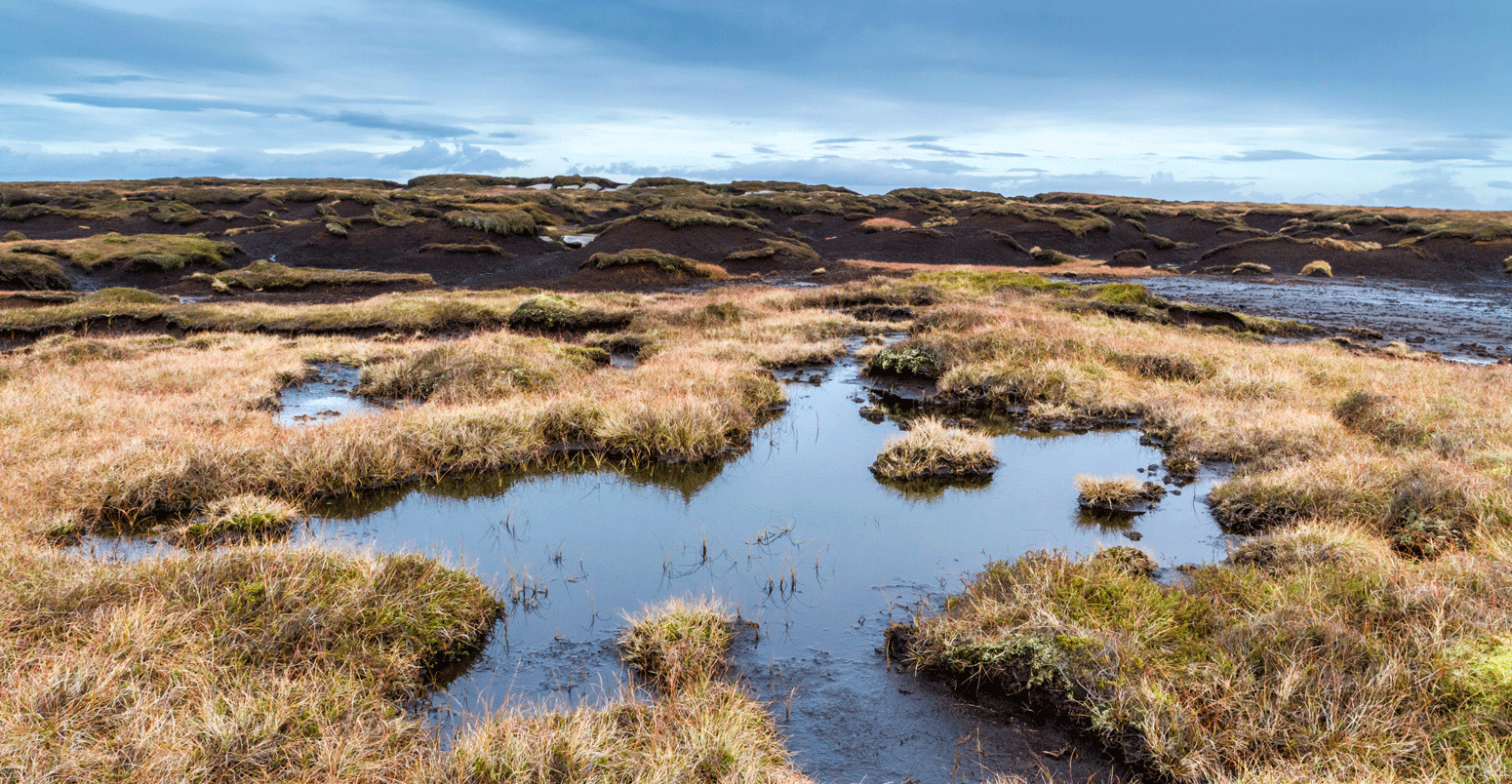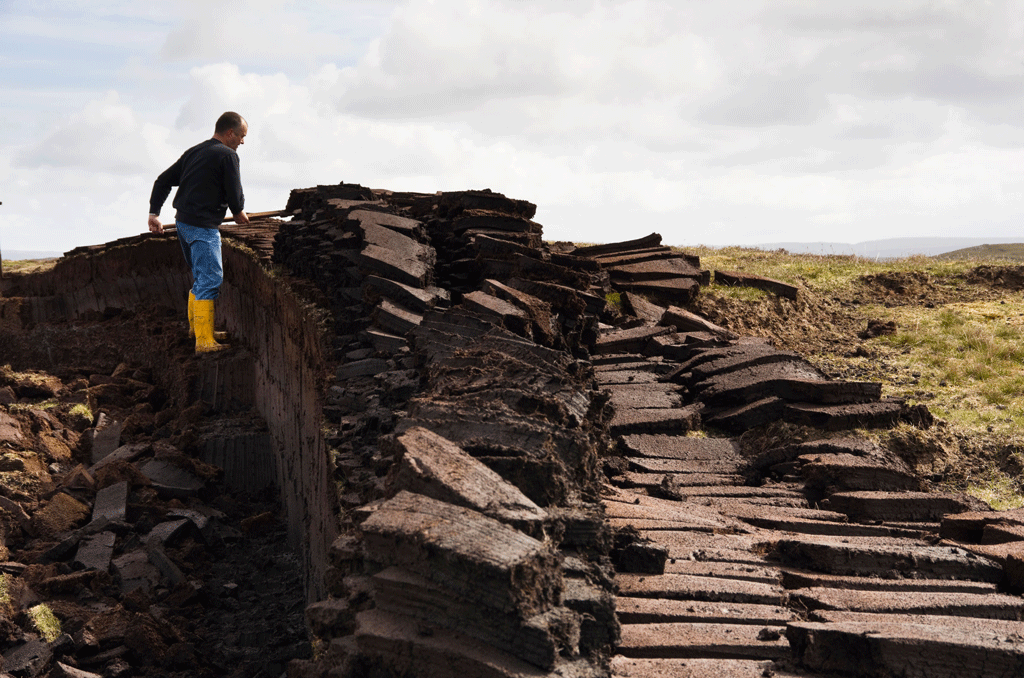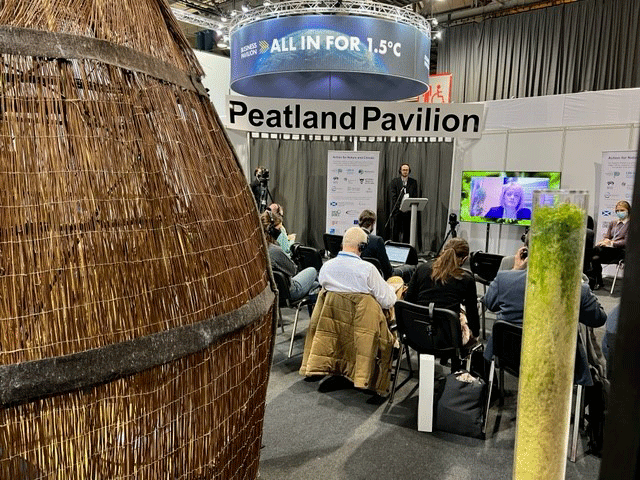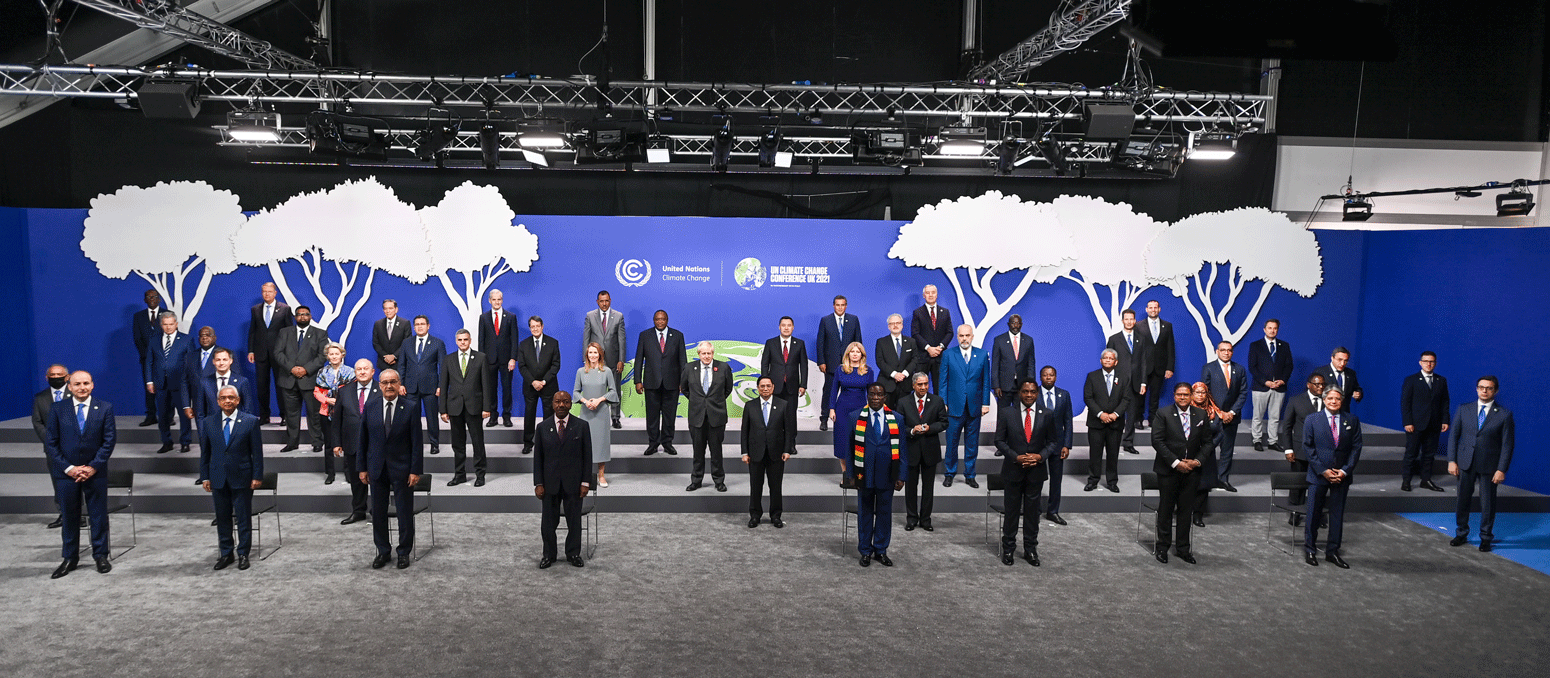
Guest post: Are the world’s peatlands better protected after COP26?

Guest authors
12.07.21
Guest authors
07.12.2021 | 2:52pmPeatlands cover just 3% of the world’s land area, but store twice as much carbon as all the trees on Earth combined.
The carbon held in these wetlands has been accumulating for millennia and may be “irrecoverable”. This means that, once released, the carbon in the soil would take centuries to re-establish – way beyond the timescales relevant for tackling climate change.
But the world is losing huge quantities of carbon from peatlands each year. In fact, humans have already pushed the Earth’s peatlands from an overall “sink” of carbon to a “source”. This is mainly due to drainage of tropical peatlands to convert land for farming.
It is now widely accepted that peatlands can play a key role in tackling climate change as one of many potential “nature-based solutions” – both through restoration efforts, but also through “avoided emissions” from protecting pristine peatlands.
The 26th Conference of the Parties (COP26) climate summit in Glasgow in November included a number of pledges and promises related to the way that the world’s land is managed. But what were the implications for peatlands and the carbon they store?
In this article, we unpack the importance of peatlands, the implications of the commitments signed at COP26, and why there is no time to lose in preserving the world’s peat.
Peatlands and net-zero
Peat is a wetland soil made of partially decomposed plant debris. The soil being saturated is key to its extraordinary stores of carbon.
The water creates “anoxic” conditions in the soil. This lack of oxygen slows down how quickly microbes can break down the organic matter the soil contains. Decomposition without oxygen produces methane, which is why peatlands are natural methane emitters. However, the sluggish pace of decomposition means that peatlands take up carbon more quickly than it is emitted.
Draining a peatland – taking the water table below a certain threshold – triggers a fundamental shift in this ecological balance. With oxygen now available, decomposition speeds up and carbon dioxide (CO2) emissions increase. This turns the peatland into a carbon source.
Additionally, peat is a fuel and, once it dries, it becomes increasingly easy to ignite. Peat fires are now common in drained or drought-affected peatlands all over the world. For example, during El Niño years, dry conditions in Indonesia can contribute to widespread peatland fires, substantially increasing global land-use emissions.
All of these extra emissions increase the account of CO2 in the atmosphere. Peatlands can be responsible for as much as 5-10% of global annual human-caused CO2 emissions.

Restoring, or “rewetting”, peatlands is, therefore, an important route towards recovering the carbon sink function in these ecosystems. It has been shown to be efficient in terms of both land area – these are the most carbon dense ecosystems in the world – and financial cost.
Even if these rewetted systems emit more methane, reducing their CO2 emissions will still help reduce climate warming overall. It is also just as important to consider avoided emissions – that is, those emissions that are saved by keeping pristine peatlands in their natural state.
The protection and restoration of peatlands also has knock-on benefits for the wider ecosystem, such as improving water quality and providing habitat for rare and threatened plants and creatures.
Nature-based solutions – also known as “natural climate solutions” – have the potential to offset about 30% of the global mitigation needed to achieve 1.5C by 2050. While these measures are not enough to tackle climate change alone – protecting peatlands has been described as “one of the most important tasks of this decade”.
Peatlands at COP26
Peatlands had a strong presence at COP26. This is perhaps not surprising considering the host nation, Scotland, is rich in peatlands and its government has pledged to restore 250,000 hectares of peatland as part of its climate commitments by 2030.

Peatlands got their own space at Glasgow – the “Global Peatland Pavilion” – where scientists and practitioners drew attention to the importance of peatlands in climate change mitigation. The importance of peatlands was also highlighted in pavilions of peat-rich countries, such as the Democratic Republic of Congo (DRC), Indonesia and Colombia.
But beyond their strong presence at Glasgow, what were the main outcomes for peatlands during the summit?
The “Glasgow Leaders’ Declaration on Forests and Land Use” was signed by more than 140 countries promising to “wor[k] collectively to halt and reverse forest loss and land degradation by 2030”. According to the UK government, the commitments are accompanied by $19.2bn of public and private finance, with at least $1.5bn earmarked specifically for protecting the forests of Africa’s Congo Basin.
Despite the disagreements that subsequently surfaced about the exact contents of the declaration, it should be beneficial for peatlands. Our interpretation is that the commitment will encompass efforts to help halt the further degradation of these ecosystems worldwide. The Congo Basin, in particular, has vast areas of peatlands.
In addition, countries such as Chile, Peru, Indonesia and the DRC included peatlands in their national pledges under the Paris Agreement – known as Nationally Determined Contributions (NDCs) – for the first time.
While these promises are positive, what really matters is what happens on the ground – especially when the pledges are not yet enshrined in law.
More to the point, not all peat-rich nations have the same social and financial opportunities to develop nature-based solutions and protect their natural resources. Some countries, such as Indonesia, feel they could only end deforestation and peatland conversion at the expense of other development goals. This means that climate and social justice comes into play for peatland resources as it does for any other natural ecosystem on Earth.
At COP26, countries also finally reached a deal on Article 6 of the Paris Agreement, which covers international carbon markets. An agreed set of rules on buying and selling carbon credits – albeit complicated and imperfect – could set the groundwork for peatland protection and restoration to be financed through different kinds of schemes.
It is also encouraging for peatlands that multilateral development banks (MDBs) now consider both the extraction of peat and electricity generation from peat to be universally not aligned with the Paris goals (pdf). This is important because it may change how investments are made in terms of what is considered “sustainable” development.
Ideally, such financial incentives should prioritise the preservation of intact peatlands to safeguard the many ecosystem services they provide. This should be considered low-hanging fruit for nature-based solutions.
The future of peatlands worldwide
Despite the progress at COP26, the future is not yet entirely rosy for peatlands. They are still undervalued in terms of their role in mitigating climate change and so finding ways to include these large carbon stores in global carbon markets should be a priority.
Offsetting human emissions with a natural sink lends itself to being used in a carbon market, but the large stores of peat carbon that took millennia to build do not offer that easy offsetting value. The challenge remains of how to value avoided emissions.
Furthermore, there are often conflicting interests on the ground when it comes to the protection – or restoration – of peatlands.
For example, Canada – one of the world’s most peatland-rich countries – is working to better protect its vast mostly pristine peatlands. At the moment, just 10% of Canada’s peatlands are protected. The Canadian government has signed the “Glasgow Leaders’ Declaration on Forests and Land Use” – mentioned above – yet there is pressure to increase mineral exploitation in peat-rich areas of its northern territories. Indigenous involvement, which has been historically absent, is beginning to form part of the solutions sought for this peatland region – for example, through the development of Indigenous Protected and Conserved Areas (pdf).

Conflicting interests also surround tropical peatlands conservation. For example, Congolese peatlands may fare better after the Central African Forest Initiative (CAFI) letter of intent was signed by the prime ministers of the DRC and UK at COP26. This pledges investments of $500m over the next five years (pdf) to protect the rainforest and peatlands in the Congo Basin.
However, there are also forestry interests and development needs in the country that may make it challenging in practice and the government is planning to lift the ban on new logging concessions.
On the other hand, some South-South cooperation and sharing of knowledge may help countries such as DRC or Peru learn lessons from peatland management in Indonesia, before their pristine peatlands are lost.
Even in European countries already financially able to consider peatland protection as a tool to reach net-zero goals, the restoration of these ecosystems is not straightforward. It demands a cultural shift as generation after generation of farmers have been “improving” – draining and adding lime to peaty soils to increase yields – the land for centuries. Convincing farmers now to rewet their land takes effort and time.
Additionally, some peatlands have been too degraded to be successfully restored as a carbon sink. And for the ecosystems that can be restored, there are still uncertainties as to how resilient they will be to rising global temperatures and other disturbances. This only highlights the importance of preserving those peatlands that are still pristine.
The protection of peatlands worldwide is a crucial step to tackling climate change. And this starts with an increased appreciation of their value as a carbon sink and the extraordinary biodiversity they hold.

